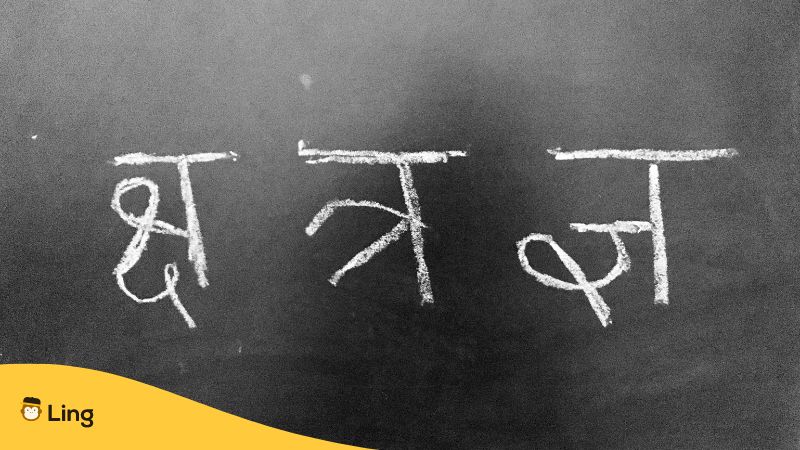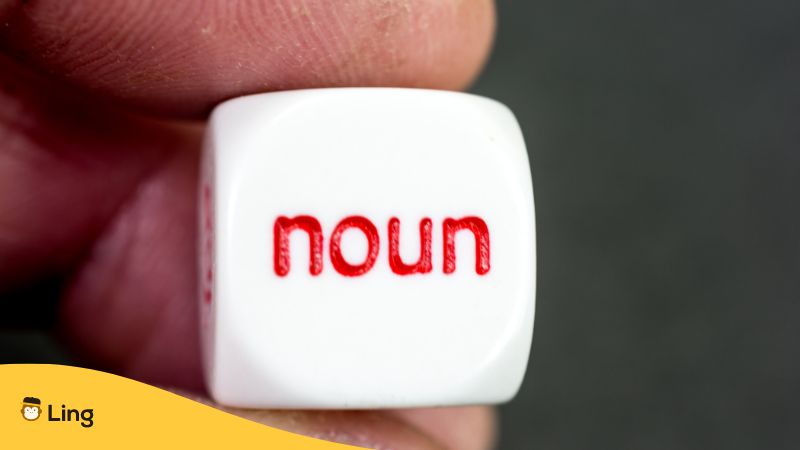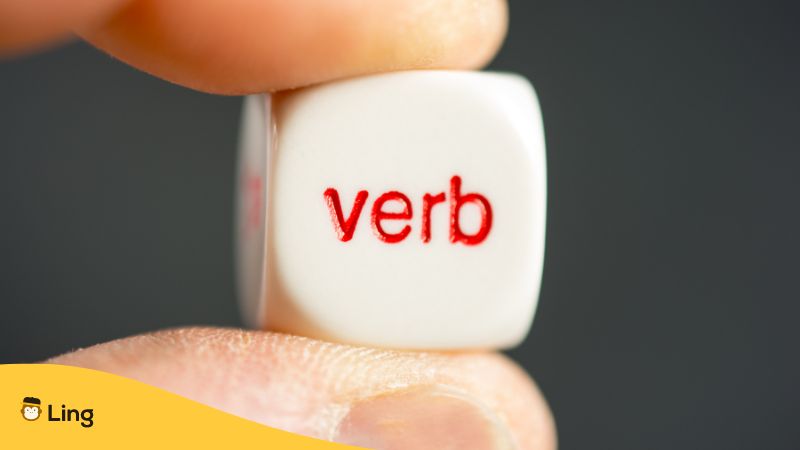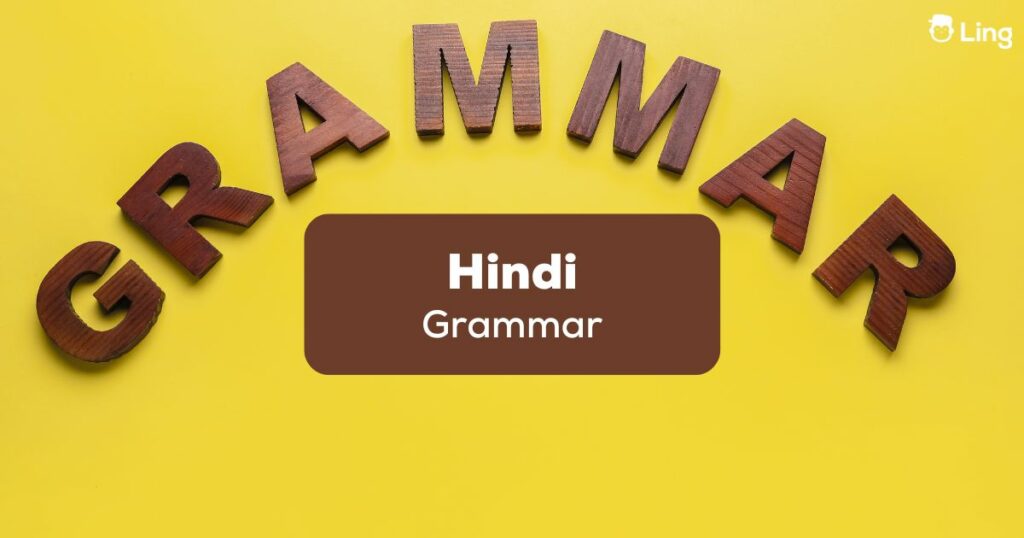I’m sure you’re aware that Hindi is constantly listed as one of the top 15 commonly learned languages in the world. And you’re also seeking to find good resources to learn this widely popular language from South Asia. That’s why you are reading this post! But did you know that learning Hindi is not THAT difficult?
Of course, its non-Latin script might not be a cakewalk but learning Hindi grammar is relatively easier. How? Well, you’ll see that further down the article.
Table of Contents
Introduction To Hindi Grammar
The Hindi word for grammar is vyaakaran (व्याकरण), pronounced as vyaa-ka-ran. Now, like many Indo-Aryan languages, the Hindi language is pretty distinct from English, and evidently, so are the grammar rules. Let’s start with a quick overview of Hindi grammar.
So, what does Hindi grammar cover? Well, to start, some grammatical concepts are similar to French grammar. So, if you know French, it might be easier for you to grasp those concepts. And that’s why, being a native-Hindi speaker, I was able to grasp French grammar rules quicker than anticipated!
For instance, nouns have genders. Pronouns differ based on familiarity and respect. There are three tenses, and verbs are mostly conjugated with an auxiliary raha/ rahee hoon (to be or to do).
Adjectives with different endings, depending on the gender of the object, and adverbs for punching up verbs are included in Hindi grammar. Prepositions for spatial relationships are also included, and the word order is ‘Subject-Object-Verb.’
In all of this, you simply have to make sure that all the gender, number, and case agreements between nouns, pronouns, adjectives, and verbs are on point. Easy! And honestly, the fun is in unraveling it all!

1. Basic Hindi Pronunciation
Before getting into Hindi grammar rules, it’s essential to understand the basics of pronunciation, or uchchaaran (उच्चारण). Hindi has a unique set of vowels (svar – स्वर) and consonants (vyanjan – व्यंजन) that may be unfamiliar to non-native speakers. Mastering the correct pronunciation of these sounds is key to effective communication.
Some commonly mispronounced sounds in Hindi include the retroflex consonants (ट, ठ, ड, ढ, ढ़, and ण) and the aspirated consonants (ख, छ, घ, झ, etc.). As a non-native speaker, you’ll need some practice to learn and improve your pronunciation.
| Hindi Consonants | Transliteration | English Parallel |
|---|---|---|
| ट | ṭa | Tomato |
| ठ | ṭha | – |
| ड | ḍa | Dad |
| ढ | ḍha | – |
| ढ़ | ḍha | |
| ण | ṇa | – |
| ख | kha | – |
| छ | chha | – |
| घ | gha | – |
| झ | jha | – |
2. Hindi Nouns
Nouns (sangya – संज्ञा) are the basic blocks of any language, and Hindi is no exception. In Hindi, nouns can be classified into two genders: masculine (pulling – पुल्लिंग) and feminine (streeling – स्त्रीलिंग). Understanding the gender of nouns is crucial for proper agreement with adjectives and verbs. Hindi nouns also have singular and plural forms, with different rules governing their formation.
Common Nouns Vs. Proper Nouns
Common nouns (saamaanya sangya – सामान्य संज्ञा) refer to general names of people, places, things, or basic ideas, while proper nouns (vyaktivaachak sangya – व्यक्तिवाचक संज्ञा) refer to specific names of individuals, places, or entities.
| Type of Noun | English | Hindi | Transliteration |
|---|---|---|---|
| Common | Boy | लड़का | Ladka |
| Common | Book | किताब | Kitaab |
| Common | City | शहर | Shahar |
| Common | Happiness | ख़ुशी | Khushi |
| Common | River | नदी | Nadi |
| Proper | Boy’s name | राम | Ram |
| Proper | Delhi city | दिल्ली शहर | Dilli Shahar |
| Proper | River Ganges | गंगा नदी | Ganga Nadi |
| Proper | The Bhagvad Gita (Hindu Scripture) | भगवद गीता | Bhagvad Geeta |
Singular Vs. Plural Nouns
In Hindi, nouns can be singular (ekvachan – एकवचन) or plural (bahuvachan – बहुवचन). The plural form is typically formed by adding suffixes like -ए (-e), -ओं (-on), -यों (-yon), or -आं (-aan) to the singular noun.
| Singular Noun | Hindi | Transliteration | Plural Nouns | Hindi | Transliteration |
|---|---|---|---|---|---|
| Boy | लड़का | Ladaka | Boys | लड़के | Ladake |
| Girl | लड़की | Ladakee | Girl | लड़कियां | Ladakiyaan |
| Bird | चिड़िया | Chidiya | Birds | चिड़ियां | Chidiyaan |
| Book | किताब | Kitaab | Books | किताबें | Kitaabein |
| Thread | धागा | Dhaaga | Threads | धागे | Dhaage |
Gender In Nouns: Masculine And Feminine
The gender of a noun is often determined by its ending or the object/entity it represents.
Examples of Masculine Nouns:
- Boy – Ladaka (लड़का)
- Dog – Kutta (कुत्ता)
- Horse – Ghoda (घोड़ा)
- Door – Darwaza (दरवाज़ा)
Examples of Feminine Nouns:
- Girl – Ladakee (लड़की)
- Cat – Billi (बिल्ली)
- Mare – Ghodi (घोड़ी)
- Book – Kitaab (किताब)
It’s important to note that some nouns, like tree (ped – पेड़) or child (bachcha – बच्चा), are considered gender-neutral or neuter (napunsakling – नपुंसकलिंग).
The gender of nouns is significant in Hindi grammar because it determines the agreement with adjectives, verbs, and other parts of speech. For example, “अच्छा लड़का” (achchha ladaka – good boy) and “अच्छी लड़की” (achchhee ladakee – good girl) have different adjective forms based on the noun’s gender.

3. Hindi Pronouns
Pronouns (sarvanaam – सर्वनाम) replace nouns to avoid repetition. In Hindi grammar, pronouns can be classified into several categories based on their usage and function.
Personal Pronouns: Purushvaachak Sarvanaam (पुरुषवाचक सर्वनाम)
Personal pronouns refer to specific people or things. They’re classified based on person (first, second, or third) and number (singular or plural):
- First Person: मैं (main – I), हम (ham – we)
- Second Person Formal/Respect: आप (aap – you), आप सब (aap sab – you all)
- Second Person Informal: तुम (tum – you), तुम सब (tum sab – you all)
- Third Person: वह (vah – he/she/it), वे (ve – they)
Demonstrative Pronouns: Sanketvaachak Sarvanaam (संकेतवाचक सर्वनाम)
Demonstrative pronouns are used to point out or indicate specific people, objects, or ideas. They help to establish proximity or distance from the speaker.
Examples: यह (yah – this), वह (vah – that), ये (ye – these), वे (ve – those)
Indefinite Pronouns: Anishchayvaachak Sarvanaam (अनिश्चयवाचक सर्वनाम)
These pronouns refer to non-specific people, objects, or things in a general or vague manner.
Examples: कुछ (kuchh – some), कोई (koi – someone/anybody), सब (sab – all/everyone), कुछ नहीं (kuchh nahin – nothing)
Interrogative Pronouns: Prashnavaachak Sarvanaam (प्रश्नवाचक सर्वनाम)
We all need to ask questions sometimes. To form these questions and seek information, we use interrogative pronouns.
Examples: कौन (kaun – who), क्या (kya – what), कहाँ (kahan – where), कब (kab – when), कैसा (kaisa – what kind of)
Relative Pronouns: Sambandhvaachak Sarvnaam (संबंध वाचक सर्वनाम)
Relative pronouns are used to introduce relative clauses, which provide additional information about a noun or pronoun.
Examples: जो (jo – who/which/that), जिसने (jisne – who/which/that, by whom/by which), जिसका (jiska – whose/of which)
Reflexive Pronouns: Nijvaachak Sarvnaam (निजवाचक सर्वनाम)
Finally, when the object of a sentence refers back to the subject, we use reflexive pronouns.
Examples: अपना (apna – one’s own), ख़ुद (khud – oneself), स्वयं (swayam – oneself)

4. Hindi Verbs And Tenses
Verbs (kriya – क्रिया) are the heart of any sentence, conveying actions, events, and states of being. In Hindi, verbs are conjugated based on various factors, including tense, voice, mood, person, and number.
1. Tenses In Hindi
The three main tenses in Hindi (kaal – काल) are present, past, and future, each with its own set of verb conjugations.
a. Present Tense (vartamaan kaal – वर्तमान काल): Used to describe actions happening in the present moment or habitual actions.
Example: Main khana khata hoon (मैं खाना खाता हूँ) – I eat food.
b. Past Tense (bhootkaal – भूतकाल): Used to express completed actions or events in the past.
Example: Maine kitaab padhi (मैंने किताब पढ़ी) – I read a book.
c. Future Tense (bhavishya kaal – भविष्य काल): Used to indicate actions or events that will occur in the future.
Example: Main kal ghoomne jaaoonga (मैं कल घूमने जाऊँगा) – I will go for an outing tomorrow.
2. Active And Passive Voice
a. Active Voice (kritvaachya – कर्तृवाच्य): In the active voice, the subject performs the action expressed by the verb.
Example: Ram ne khana khaya (राम ने खाना खाया) – Ram ate the food.
b. Passive Voice (karmavaachya – कर्मवाच्य): In the passive voice, the subject is acted upon by the verb.
Example: Ram dwara khana khaya gaya (राम द्वारा खाना खाया गया) – The food was eaten by Ram.
3. Mood: Indicative, Imperative, Subjunctive
a. Indicative Mood (bhootaarth vritti – भूतार्थ वृत्ति): Used to make statements or ask questions about facts or events.
Example: Vah school jata hai (वह स्कूल जाता है) – He goes to school.
b. Imperative Mood (vidhi vritti – विधि वृत्ति): Used to give commands, instructions, or make requests.
Example: dheere chalo (धीरे चलो) – Walk slowly.
c. Subjunctive Mood (sambhaavya vritti – संभाव्य वृत्ति): Used to express hypothetical, conditional, or uncertain situations.
Example: Yadi main dhani hota toh main ek ghar khareedata (यदि मैं धनी होता तो मैं एक घर खरीदता) – If I were rich, I would buy a house.
Moreover, verb conjugation in Hindi also factors in the person (first, second, or third) and number (singular or plural) of the subject. For example:
- First Person Singular: Main khata hoon (मैं खाता हूँ) – I eat
- Second Person Singular: Tum khate ho (तुम खाते हो) -You eat
- Third Person Singular: Vah khata hai (वह खाता है) – He/She/It eats
- First Person Plural: Ham khate hain (हम खाते हैं) – We eat
- Second Person Plural: Aap khate hain (आप खाते हैं) – You all eat
- Third Person Plural: Ve khate hain (वे खाते हैं) – They eat

5. Hindi Adjectives
Adjectives (visheshan – विशेषण) add color and detail to your speech and writing. In Hindi, adjectives describe nouns and must agree with the noun’s gender, number, and case. An adjective can also be used in comparative and superlative forms to express degrees of comparison.
1. Formation And Placement Of Adjectives
Adjectives in Hindi agree with the nouns they modify in terms of gender, number, and case. They typically precede the noun they describe but can also follow it in certain cases.
Example: Achchha ladaka (अच्छा लड़का – good boy), ladakee sundar hai (लड़की सुंदर है – the girl is beautiful).
2. Degrees Of Comparison
Positive Degree (nishtha vaachak – निष्ठा वाचक): Expresses the basic quality without comparison.
Example: Yah ghar bada hai (यह घर बड़ा है) – This house is big.
Comparative Degree (uttam vaachak – उत्तम वाचक): Compares two entities based on the quality.
Example: Yah ghar us ghar se bada hai (यह घर उस घर से बड़ा है) – This house is bigger than that house.
Superlative Degree (param uttam vaachak – परम उत्तम वाचक): Expresses the highest or lowest degree of the quality.
Example: Yah ghar sabse bada hai (यह सबसे बड़ा घर है) – This is the biggest house.
6. Hindi Adverbs
Adverbs (kriya visheshan – क्रिया विशेषण) modify verbs, adjectives, or other adverbs, providing more information about how, when, or where an action takes place. They can be placed before or after the word they modify, depending on the context and emphasis.
Examples: vah dheere chalata hai (वह धीरे-धीरे चलता है – He walks slowly), vah bahut tez daudata hai (वह बहुत तेज़ दौड़ता है – He runs very fast).
Understanding the placement of adjectives and adverbs in Hindi sentences is crucial for constructing grammatically correct and meaningful phrases.
Types Of Adverbs
| Types of Adverbs | English | Hindi | Transliteration |
|---|---|---|---|
| Adverbs of Manner: Describe how an action is performed | Slowly, quickly, easily | धीरे, तेज़, आराम से | dheere, tez, aaraam se |
| Adverbs of Time: Indicate when an action occurs | tomorrow, today, now | कल, आज, अभी | kal, aaj, abhi |
| Adverbs of Place: Specify where an action takes place | there, here, above | वहाँ, यहाँ, ऊपर | vahaan, yahaan, oopar |
| Adverbs of Frequency: Denote how often an action happens | sometimes, always, never | कभी-कभी, हमेशा, कभी नहीं | kabhi-kabhi, hamesha, kabhi nahi |
7. Hindi Prepositions
In Hindi, prepositions are known as sambandhbodhak (संबंधबोधक), which literally means ‘relation-expressing’ words. They help express spatial and temporal relationships between objects, people, and ideas and provide context and clarity to sentences.
Unlike English prepositions that precede nouns/pronouns, Hindi prepositions come after the noun/pronoun they are relating to.
Some common Hindi prepositions include:
| English | Hindi | Transliteration | Hindi Example | Transliteration | Meaning |
|---|---|---|---|---|---|
| On, upon | पर | Par | किताब मेज़ पर है। | Kitaab mez par hai. | The book is on the table. |
| In, inside | में | Mein | लड़का कमरे में है। | Ladaka kamre mein hai. | The boy is in the room. |
| From, out of | से | Se | वह दिल्ली से आया है। | Vah dilli se aaya hai. | He has come from Delhi. |
| Until, upto | तक | Tak | मैं सुबह से शाम तक काम करता हूँ। | Main subah se shaam tak kaam karta hoon. | I work from morning until evening. |
| For | के लिए | Ke liye | यह तोहफ़ा आपके लिए है। | Yah tohfa aapke liye hai. | This gift is for you. |
| Near, next to | के पास | Ke paas | स्कूल मेरे घर के पास है। | School mere ghar ke paas hai. | The school is near my house. |
Prepositions often combine with other words to form new meanings, like ke baad (के बाद -after), ke neeche (के नीचे – under), ke saamane (के सामने – in front of).
It’s important to note that some Hindi prepositions can also function as postpositions, coming after the object rather than the subject. For example: Mujh se poochho (मुझ से पूछो – Ask me) – here se (se) is a postposition.
8. Hindi Conjunctions
Conjunctions are known as sanyojak (संयोजक) or samuchchay (समुच्चय) in Hindi. They are words that connect words, phrases, or clauses together to form a more cohesive and meaningful sentence. They help in expressing complex ideas and relationships between different parts of a sentence. They can be classified into different types based on their function.
1 . Coordinating Conjunctions: Sammilit Samuchchay (सम्मिलित समुच्चय)
These conjunctions join two or more words, phrases, or clauses of equal importance.
| Conjunction | Hindi | Transliteration | Hindi Example | Transliteration | Meaning |
|---|---|---|---|---|---|
| And | और | Aur | राम और शीतल स्कूल गए। | Ram aur sheetal school gaye. | Ram and Sheetal went to school. |
| But | लेकिन | Lekin | मैं आऊँगा लेकिन देर से। | Main aaoonga lekin der se. | I will come, but late. |
| Or | या | Ya | आप चाय लेंगे या कॉफ़ी लेंगे? | Aap chai lenge ya kaufee lenge. | Will you have tea or coffee? |
| That | कि | Ki | मैं जानता हूं कि यह मेरी गलती है। | Main jaanta hoon ki yah meri galti hai. | I know that it is my fault. |
2. Subordinating Conjunctions: Aashrit Samuchchay (आश्रित समुच्चय)
These conjunctions connect a dependent clause to an independent clause, establishing a cause-effect or other relationships.
| Conjunction | Hindi | Transliteration | Hindi Example | Transliteration | Meaning |
|---|---|---|---|---|---|
| Because | क्योंकि | Kyonki | मैं घर नहीं जा सकता क्योंकि मेरी गाड़ी खराब है। | Main ghar nahi ja sakta kyonki meri gaadi kharab hai. | I can’t go home because my car is broken down. |
| When | जब | Jab | जब बारिश रुकेगी तब हम घर जाएँगे। | Jab baarish rukegi tab ham ghar jaayenge. | When it stops raining, then we will go home. |
| If | अगर | Agar | अगर आप मेहनत करेंगे तो सफल होंगे। | Agar aap mehnat karenge toh safal honge. | If you work hard, you will be successful. |
3. Correlative Conjunctions: Sahsambandhak Samuchchay (सहसम्बन्धक समुच्चय)
These are pairs of conjunctions used to join two parts of a sentence together.
| Conjunction | Hindi | Transliteration | Hindi Example | Transliteration | Meaning |
|---|---|---|---|---|---|
| Neither… nor | न…न | Na… na | न वह पढ़ता है, न ही वह खेलता है। | Na vah padhta hai, na hi vah khelata hai | Neither does he study, nor does he play. |
| Either… or | या तो…या | Ya toh… ya | या तो आप मेरी बात मानिए या फिर चले जाइए। | Ya toh aap meri baat maaniye ya phir chale jaaiye. | Either you accept my words, or leave. |
9. Hindi Interjections
Interjections in Hindi grammar are words or phrases that express strong emotions or sentiments without being grammatically related to the rest of the sentence.
They are often used to convey surprise, joy, anger, pain, or to grab someone’s attention. They are generally invariable, meaning they don’t change their form based on gender, number, or case. Interjections can stand alone or be combined with other words or phrases.
| Interjection | Hindi | Transliteration | Hindi Example | Transliteration | Meaning |
|---|---|---|---|---|---|
| Hey/ Oh | अरे | Arey | अरे, तुम कब आए? | Arey, tum kab aaye? | Hey, when did you come? |
| Wow | वाह | Waah | वाह, यह तो बहुत सुंदर है! | Waah, yah toh bahut sundar hai. | Wow, this is really beautiful! |
| Oh | ओह | Oh | ओह, मैं भूल गया था। | Oh, main bhool gaya tha. | Oh, I had forgotten. |
| Alas | हाय | Haay | हाय, हम मैच हार गए! | Haay, ham match haar gaye! | Alas, we lost the match! |
| Okay, well | अच्छा | Achchha | अच्छा, ठीक है। मैं चलता हूँ। | Achchha, theek hai. Main chalata hoon. | Well, okay. I’m leaving. |
10. Hindi Sentence Structure And Types Of Sentences
The Hindi language follows the SOV sentence pattern, which differs from the SVO order commonly found in English grammar.
Example: राम (Subject) सेब (Object) खाता है (Verb) – Ram (subject) seb (object) khata hai (verb).
Meaning: Ram eats an apple.
Okay, let’s break down the types of sentences:
1. Affirmative Sentences
Used to make statements or assertions
Example: Main school jata hoon (मैं स्कूल जाता हूँ – I go to school).
2. Negative Sentences
Used to negate or deny a statement
Example: Main school nahi jata hoon (मैं स्कूल नहीं जाता हूँ – I do not go to school).
3. Interrogative Sentences
For asking questions.
Example: Kya tum school jate ho? (क्या तुम स्कूल जाते हो? – Do you go to school?)
4. Complex Sentences
Complex sentences with an independent clause and one or more dependent clauses.
Example: Jab main school gaya toh main apne doston se mila (जब मैं स्कूल गया, तो मैंने अपने दोस्तों से मिला – When I went to school, I met my friends).
5. Compound Sentences
These sentences consist of two or more independent clauses joined by a conjunction.
Example: Main school gaya aur apne doston se mila (मैं स्कूल गया और अपने दोस्तों से मिला – I went to school, and met my friends).

Checklist For Mastering Hindi Grammar
It might look really challenging if you’re learning it for the first time, but here are some actionable tips to learn Hindi grammar 5X faster!
☑️ Set a daily 15-minute grammar practice routine with the Ling app.
☑️ Keep a notebook for lessons, sample sentences, and doubts.
☑️ Watch Bollywood movies with subtitles.
☑️ Find language exchange partners.
☑️ Listen and repeat after podcasts.
☑️ Use online worksheets for sentence practice.
☑️ Ask native Hindi speakers for improvement feedback.
Ready To Learn Hindi?
And that’s a wrap on the need-to-knows for Hindi grammar, my friends! I know all those word endings and verb rules might seem tougher to crack than a coconut at first. But stick with it, and before you know it, you’ll be stringing sentences together like a Bollywood dialog writer!
So what did you think? Was this a good starter guide to get your Hindi grammar groove on? Give me the skinny in the comments!



































































